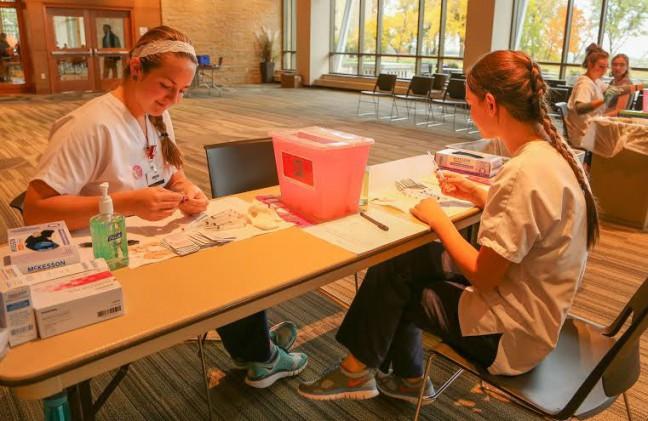Cool breezes are stirring, North Face jackets are emerging and pumpkin spiced lattes are selling. All these signs point towards one thing – flu shot season. Right now the American media is embracing Ebola into the national spotlight as the primary health concern for Americans, but the real priority should remain on the annual influenza season.
Of course Ebola is no laughing matter, but it is not nearly as easily transmitted as the flu, and American public health workers have the training and experience to better contain the epidemic. The flu itself is not necessarily as deadly as the Ebola virus. However, it significantly impairs the function of the immune system, which makes the individual more vulnerable to other diseases and viruses that could be fatal. Just in the United States, the flu is responsible for around 36,000 annual deaths and over 200,000 hospitalizations.
The typical height of flu season is in December through February, but the season has sometimes been known to begin in early October. This means that you should avoid the risk of an early flu season by getting your shot as soon as possible. Of course there are many out there who have their reasons not to get flu shots. To potentially persuade those who are anti-flu shots to get the shot, here are some popular flu myths: You can catch the flu from the vaccine; you don’t need the flu shot if everyone else get it; you can’t spread the flu if you are feeling well; don’t need the flu shot if you got it last year. All of these are bogus.
If anybody gets the flu even after their shot, it is because their vaccination takes close to two weeks to fully take effect and they likely contracted the flu within that time. The second myth is wrong because getting the flu shot does not automatically prevent against getting the disease, and there are likely others who are taking the same theory of thought as you, making it an ineffective strategy. Third, just because someone may seem healthy at the time doesn’t mean they are, approximately 20 – 30 percent flu victims have no symptoms. Lastly, the flu changes and mutates each year which means last year’s flu is much different from this year’s.
The most vulnerable demographic populations to contracting influenza are pregnant women, older adults and young children. While college students generally don’t fall under any of these categories, it doesn’t mean they are immune. A medical study showed that the flu vaccination was connected to a 71 percent reduction in flu-related hospitalizations among adults of all ages. Despite this promise, anybody can catch the flu, no matter how safe and careful a person is.
The flu and a cold are often confused by many people. While colds are very common, the flu is far less prevalent despite similar symptoms. Symptoms of the flu include a high fever, cough and/or sore throat, runny or stuffed nose, head and/or body aches, chills, fatigue, nausea and diarrhea. Many of these symptoms overlap with a cold, but don’t make a mistake; flu symptoms are more severe and intense.
Of course there are no guarantees in getting the flu shot, yet there is nothing bad that can ultimately result from receiving the immunization. Getting the shot not only makes you safer, but also the community around you safer. Be a part of a healthy community and University of Wisconsin students make your way over to University Health Services on the sixth floor of the Student Activity Center at East Campus Mall for your FREE flu shot!
Ryan Smith ([email protected]) is a junior majoring in strategic communication.














